Understanding Pharmacy Benefit Managers, Spread Pricing, and the Rebate System
Pharmacy Benefit Managers (PBMs), spread pricing, and the rebate system—these terms are often cloaked in industry jargon, creating confusion. For HR professionals managing benefits, understanding these mechanisms is key to balancing employee needs with cost control. Let’s demystify these components to see how PBMs work and their influence on drug pricing.

Want to understand better how PBMs impact your business? Contact Triforta for expert guidance on navigating the complexities of drug pricing and PBM practices.
Decoding Formulary Tiers: Not All Medications Are Created Equal
PBMs manage drug costs through
formularies—tiered lists of medications that categorize drugs based on cost, therapeutic value, and coverage options. These tiers determine both the availability of specific drugs and the out-of-pocket costs for patients, significantly impacting an employee’s choices and expenses when seeking medication. Each tier has distinct characteristics and cost implications:
Tier 1: Generic Medications
This tier includes generic versions of brand-name drugs, typically the most affordable options for patients. PBMs encourage the use of Tier 1 drugs due to their cost-effectiveness, as generics offer similar therapeutic effects as brand-name drugs but at a fraction of the cost. Employees may face minimal co-pays, promoting accessibility for essential medications.
Tier 2: Preferred Brand-Name Medications
These drugs are brand-name medications that PBMs have negotiated for discounts with manufacturers, making them more affordable than non-preferred options. By negotiating reduced rates, PBMs aim to keep these drugs accessible while slightly higher than Tier 1 generics. Preferred brands are strategically included to provide cost-effective alternatives without sacrificing treatment quality.
Tier 3: Non-Preferred Brand-Name Medications
This category comprises brand-name drugs that lack significant PBM-negotiated discounts, often due to limited competition or high manufacturer pricing. These medications generally have higher co-pays, encouraging patients to consider Tier 1 or Tier 2 alternatives. Employers and patients may experience increased costs if they choose medications from this tier, as PBMs apply additional charges.
Tier 4: Specialty Drugs
Specialty medications, often used to treat complex or chronic conditions like cancer or autoimmune disorders, reside in Tier 4. These drugs typically require special handling, administration, or monitoring, which contributes to their high cost. Co-pays and out-of-pocket expenses are the highest for this tier, reflecting the elevated cost of producing and distributing specialty medications. Patients may face significant financial burdens, even with coverage, due to the lack of affordable alternatives.
While these formulary tiers offer a structured approach to drug coverage, they don’t always result in lower costs for employees. Rebates, spread pricing, and PBM negotiations further complicate how drugs are placed within these tiers, often making it difficult for patients and plan sponsors to identify the most cost-effective options.
Navigating the Complexities of Rebates
PBMs often negotiate rebates from pharmaceutical manufacturers in exchange for favorable placement on formularies. While rebates theoretically aim to lower costs, PBMs frequently retain a large portion as profit, resulting in higher out-of-pocket patient expenses. This practice can obscure true drug costs, making it difficult for employers and patients to gauge actual spending.
The lack of transparency surrounding rebates allows PBMs to benefit financially while plan sponsors and employees bear the brunt of inflated prices. Spread pricing further compounds this issue, highlighting the need for increased oversight in PBM practices.
Interested in more transparent solutions for managing drug costs?
Learn how Triforta can help.
Spread Pricing: Widening the Gap Between Cost and Reimbursement
Spread pricing occurs when PBMs charge employers more than what they reimburse pharmacies, pocketing the difference as profit. PBMs use an average wholesale price to negotiate a discount with employers, then reimburse pharmacies at a lower rate. This practice results in a hidden margin, increasing costs for employers and employees.
When spread pricing is prevalent, neither employers nor patients have a clear view of the actual cost of prescriptions. Without transparency and regulatory oversight, PBMs can continue this practice with minimal accountability, impacting overall healthcare spending.
Legislative Efforts and Calls for Reform
As awareness grows, so does the call for transparency in PBM practices. Several states and federal legislators are pushing for reforms that aim to curtail self-serving PBM practices and introduce transparency in drug pricing.
● Pharmacy Benefit Manager Reform Act
A Senate bill aiming to ensure PBMs act in the best interest of clients, advocating for open contracts and accountability.
● Protecting Patients Against PBM Abuses Act
A bipartisan House bill designed to eliminate spread pricing, making PBM profits more service-based and transparent.
● The DRUG Act
A federal bill aimed at setting benchmarks for Medicare drug pricing, increasing transparency, and driving savings for Medicaid programs.
● Transparency in Coverage Final Rule
This rule promotes clarity in drug pricing to empower consumers and employers, allowing them to make informed decisions regarding prescription coverage.
These legislative efforts reflect a growing recognition of the need for a system that serves employers and employees, not just corporate interests.
FAQs About Pharmacy Benefit Managers, Spread Pricing, and the Rebate System
How does PBM spread pricing work?
PBMs negotiate discounts on medications with employers and insurance providers, then reimburse pharmacies at a lower rate than the negotiated price. The difference between what the employer pays and what the pharmacy receives—known as the "spread"—serves as profit for the PBM. This practice raises costs for plan members and employers.
How do PBM rebates work?
Pharmaceutical companies offer rebates to PBMs to secure favorable formulary placement for their drugs. However, PBMs often keep a large portion of these rebates as profit, which can inflate the cost of medications for both employers and patients.
What is the pass-through pricing model?
The pass-through pricing model operates with transparency as its foundation, where PBMs pass all negotiated discounts and rebates directly to the employer or payer, allowing for better insight into actual costs.
What is the difference between spread and pass-through pricing?
The main difference lies in how costs and savings are handled. Spread pricing allows PBMs to profit from the gap between the negotiated price and the pharmacy reimbursement rate, which can inflate drug costs. In contrast, pass-through pricing provides transparency, allowing employers to see the actual cost of medications without hidden markups.
Conclusion
The roles of PBMs spread pricing, and rebates in the pharmaceutical industry add layers of complexity to drug pricing for employers and employees. Without transparency, PBM practices can lead to inflated costs and confusion. While recent legislation aims to introduce accountability and clarity, more collective effort is needed to establish a healthcare system that prioritizes fair pricing for all.
Understanding these elements and their impact on drug costs is essential for employers and HR professionals tasked with managing healthcare plans. By staying informed, employers can make better decisions and advocate for a system that aligns with the needs of employees and reduces financial burdens across the board.
Looking to take control of your company’s prescription drug costs? Get in touch with Triforta for customized solutions that align with your needs and goals.

CAPABILITIES
"TRIFORTA" is a registered trademark employed by the TRIFORTA Partners group of companies. All insurance offers, requests, and guidance provided through this website are delivered by licensed affiliated insurance producers of TRIFORTA, namely Elite Consulting and Insurance Services and Rodney Mattos. No offers, requests, or guidance are extended through this website in any state where one of the aforementioned TRIFORTA licensees lacks the required license. For a comprehensive list of all relevant license numbers in each state, please refer to our License Page.
New Paragraph









